Contents
- 1 🏕️ How to Choose the Right Tent: A Complete Camping Buyer’s Guide
- 2 ⛺ 1. Know Your Camping Style
- 3 🧱 2. Tent Shapes & Structures
- 4 🌧️ 3. Understand Tent Seasons
- 5 🔒 5. Weatherproofing & Ventilation
- 6 🧭 7. Don’t Forget the Extras
- 7 💰 8. Price & Warranty Considerations
- 8 ✅ Final Thoughts
- 9 ❓ Frequently Asked Questions (FAQ)
🏕️ How to Choose the Right Tent: A Complete Camping Buyer’s Guide
Introduction
Choosing the right tent is one of the most important decisions you’ll make for your camping trip. So heading out for a weekend with family, a solo backpacking adventure, or a rugged mountaintop trek — your tent is your home away from home.
In this guide, we’ll break down tent types, materials, and key features, so you can make an informed choice and sleep soundly under the stars.
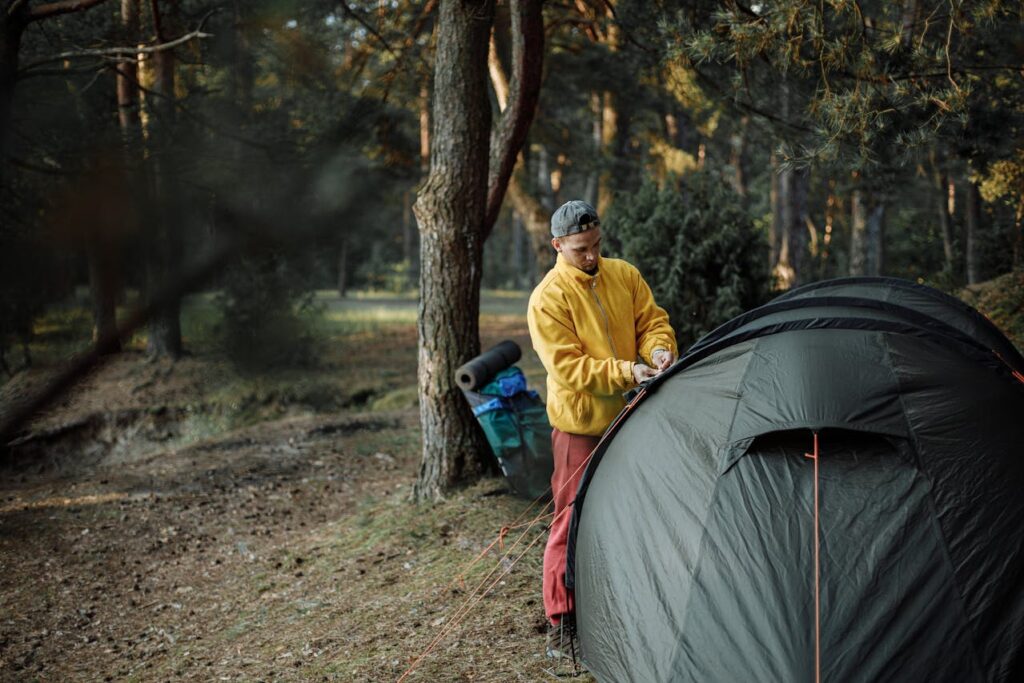
⛺ 1. Know Your Camping Style
Before buying a tent, consider how and where you’ll be camping.
| Type | Best For | Features |
|---|---|---|
| Car Camping | Families & beginners | Spacious, easy setup, heavier build |
| Backpacking | Hikers & solo travelers | Lightweight, compact, weather-resistant |
| Expedition | Extreme environments | 4-season build, reinforced structure |
| Glamping | Comfort seekers | Large, decorative, luxury interior options |
💡 Pro Tip: If you camp mostly in one region (e.g., deserts, forests, or mountains), choose a tent designed for that specific environment.
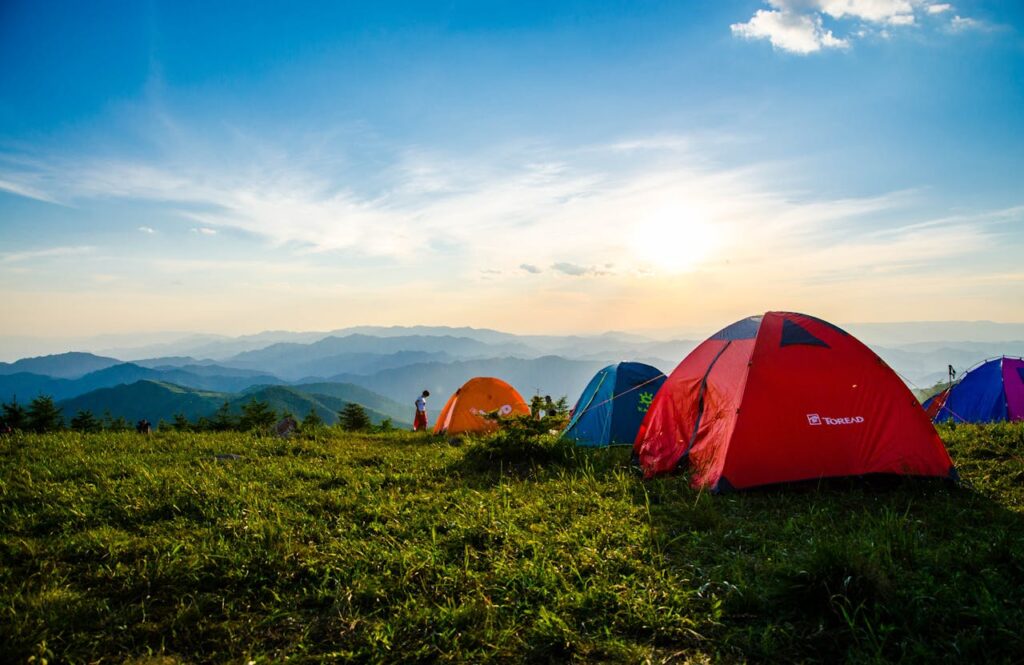
🧱 2. Tent Shapes & Structures
Each tent design has unique advantages:
- Dome Tent: Most popular; easy setup and good in moderate wind.
- Cabin Tent: Tall walls and roomy interiors; perfect for families.
- Tunnel Tent: Great space-to-weight ratio; ideal for backpackers.
- Geodesic Tent: Best for strong winds and snow (mountaineering).
- Pop-up Tent: Ultra-fast setup; great for festivals and short trips.
💡 Pro Tip: Dome tents are the best all-rounders for casual campers — they balance space, stability, and price.
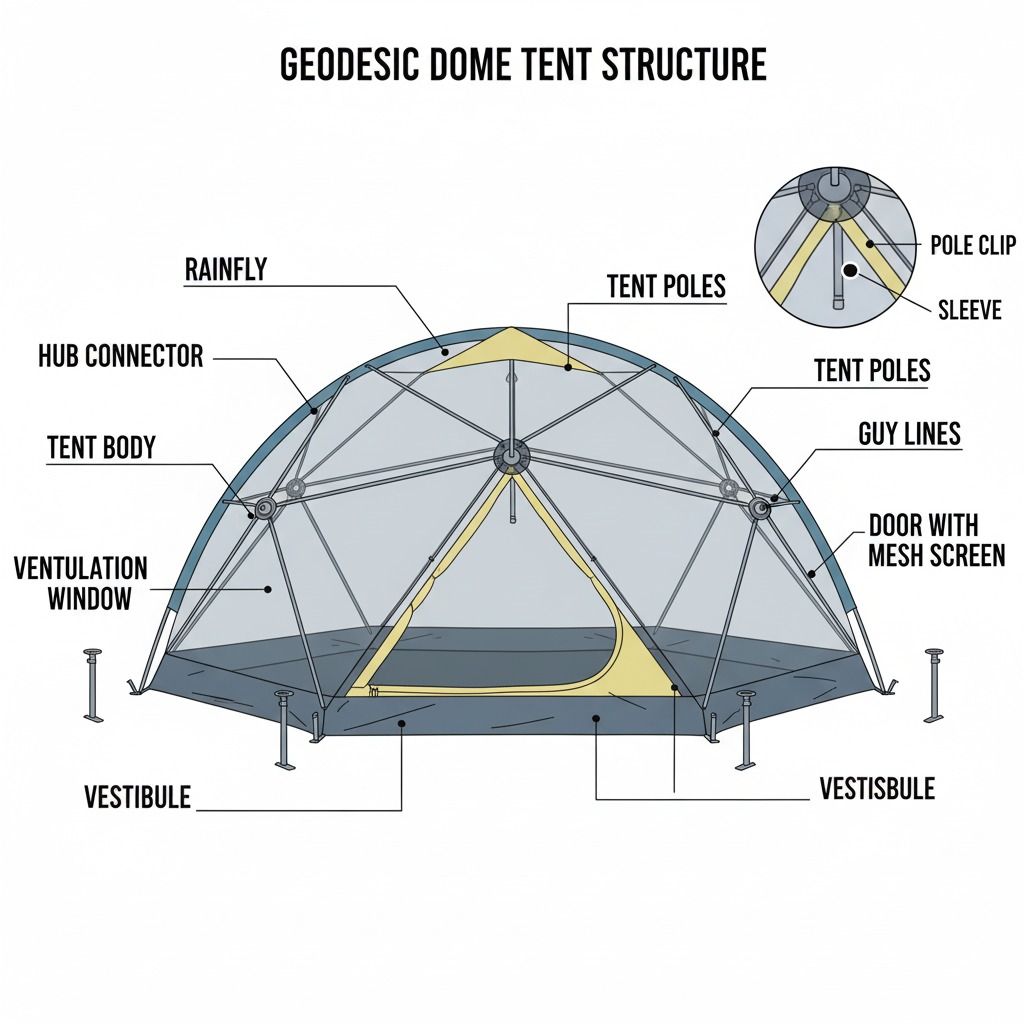
🌧️ 3. Understand Tent Seasons
When tents are labeled by “seasons,” it refers to weather performance, not the time of year.
| Tent Season | Best For | Description |
|---|---|---|
| 2-Season | Mild weather | Lightweight, basic rain protection |
| 3-Season | Spring–Fall | Handles rain and wind well |
| 4-Season | Winter | Insulated, built for snow and cold |
| Convertible | All-year campers | Adaptable panels for different weather |
💡 Pro Tip: Most campers are fine with a 3-season tent — it’s the most versatile choice for rain, wind, and temperature changes.
🧰 4. Materials Matter: Fabric & Poles
Tent Fabric:
- Nylon: Lightweight and popular for backpacking.
- Polyester: UV-resistant and affordable.
- Canvas (Cotton): Durable and breathable, but heavy.
Tent Poles:
- Aluminum: Strong and durable.
- Fiberglass: Cheaper but less sturdy.
- Carbon Fiber: Premium, lightweight option for serious backpackers.
💡 Pro Tip: Always check denier (D) — higher means thicker, more durable fabric.
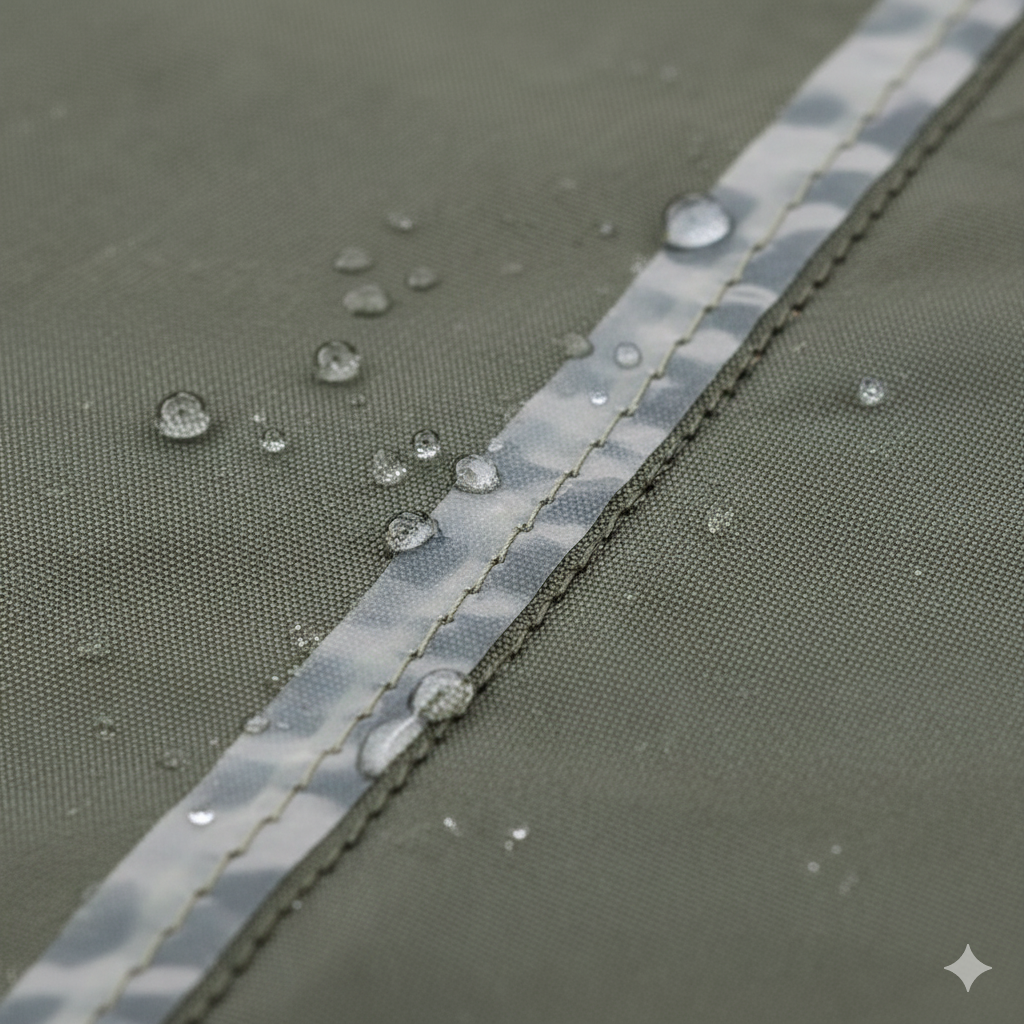
🔒 5. Weatherproofing & Ventilation
A tent must balance waterproofing and airflow to prevent condensation.
Look for:
- Rainfly: Covers the tent for added rain protection.
- Sealed Seams: Keeps water from leaking in.
- Vents & Mesh Panels: Allow fresh air and reduce condensation.
💡 Pro Tip: Always check the hydrostatic head rating (HH) — 2000mm+ is ideal for waterproof protection.
🪶 6. Size, Weight & Setup Time
- Tent Capacity: Always go one size up (a “2-person” tent fits 2 snugly).
- Weight: If backpacking, aim for <2.5 kg (5.5 lbs).
- Setup: Freestanding tents are easiest to pitch solo.
💡 Pro Tip: Watch for “fast pitch” or “color-coded poles” in tent descriptions — they make setup much quicker.
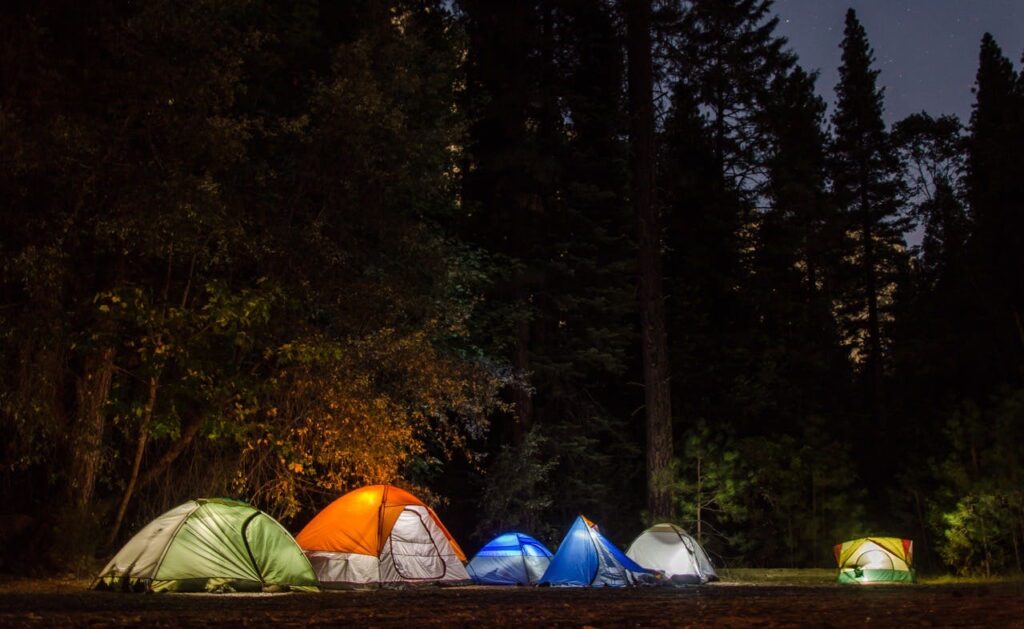
🧭 7. Don’t Forget the Extras
Essential accessories to complete your setup:
- Tent footprint (protects the floor)
- Repair kit (patches, pole sleeves, seam sealant)
- Guy lines & stakes (for extra stability)
- Doormat or tarp (keeps mud outside)
💡 Pro Tip: Always pack extra tent stakes — they tend to get lost easily!
💰 8. Price & Warranty Considerations
Budget Breakdown:
- $100–$200: Great entry-level tents for casual campers.
- $200–$500: High-quality 3-season tents for regular use.
- $500+: Premium 4-season or ultralight models for pros.
Choose reputable brands that offer warranties and repair services — tents are long-term investments.
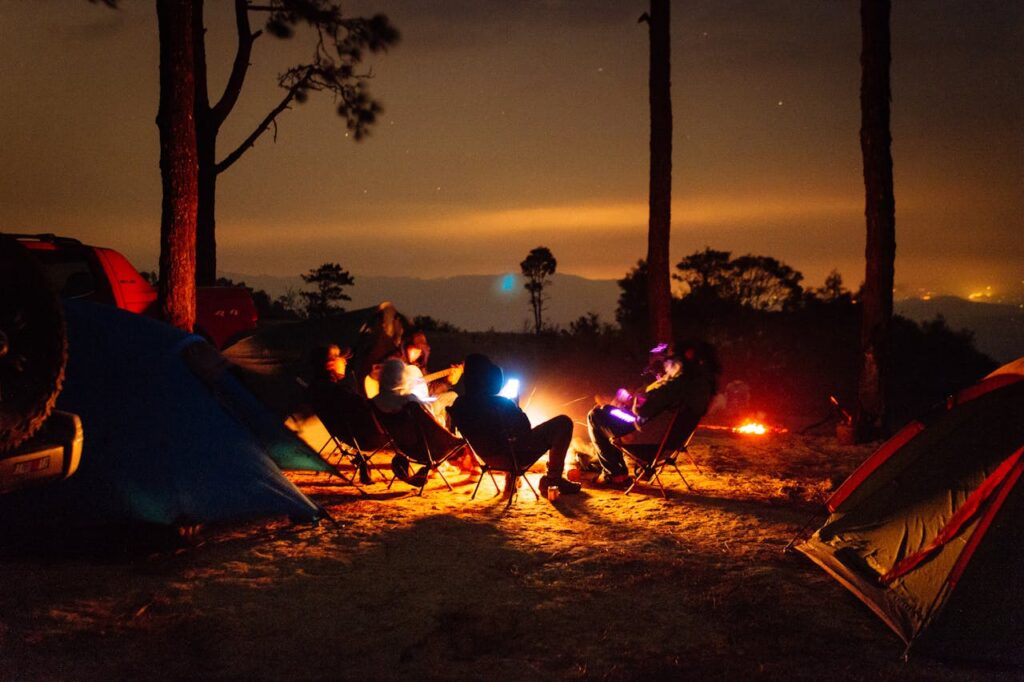
✅ Final Thoughts
The best tent for you depends on your camping style, environment, and budget.
If you prioritize weight, go for a lightweight dome or backpacking tent.
If comfort is key, opt for a cabin or family-style tent.
Your tent is more than just shelter — it’s the foundation of your entire camping experience. Choose wisely, and it’ll reward you with years of outdoor memories.
❓ Frequently Asked Questions (FAQ)
🏕️ 1. What size tent should I buy?
If a tent says it’s for two people, expect it to fit two sleeping bags — not much else. For comfort, choose a tent that sleeps one person more than your group size (e.g., a 3-person tent for two campers).
🌦️ 2. What’s the difference between a 3-season and a 4-season tent?
A 3-season tent is built for spring, summer, and fall — it’s lightweight, breathable, and handles rain and wind well.
A 4-season tent adds heavier fabric and stronger poles to withstand snow, cold, and high winds, ideal for winter camping or mountaineering.
💧 3. How do I know if a tent is waterproof?
Check the hydrostatic head rating (HH) — the higher the number, the more waterproof the tent.
A tent with 2,000mm HH or more will keep you dry during rainstorms. Also, look for taped seams and a full rainfly for extra protection.
🎒 4. What’s the easiest type of tent to set up?
For beginners or solo campers, pop-up or freestanding dome tents are the easiest to pitch. They usually feature color-coded poles and clip systems that take less than 10 minutes to assemble.
🧰 5. How long should a good tent last?
A quality tent can last 5–10 years with proper care. Always dry it completely before storing, avoid direct sunlight for long periods, and repair small tears or broken poles early to extend its lifespan.
🧭 6. How do I choose a tent for backpacking?
Focus on weight, pack size, and weather durability. A good backpacking tent should be under 2.5 kg (5.5 lbs), have double-wall protection, and pack compactly into your backpack.


